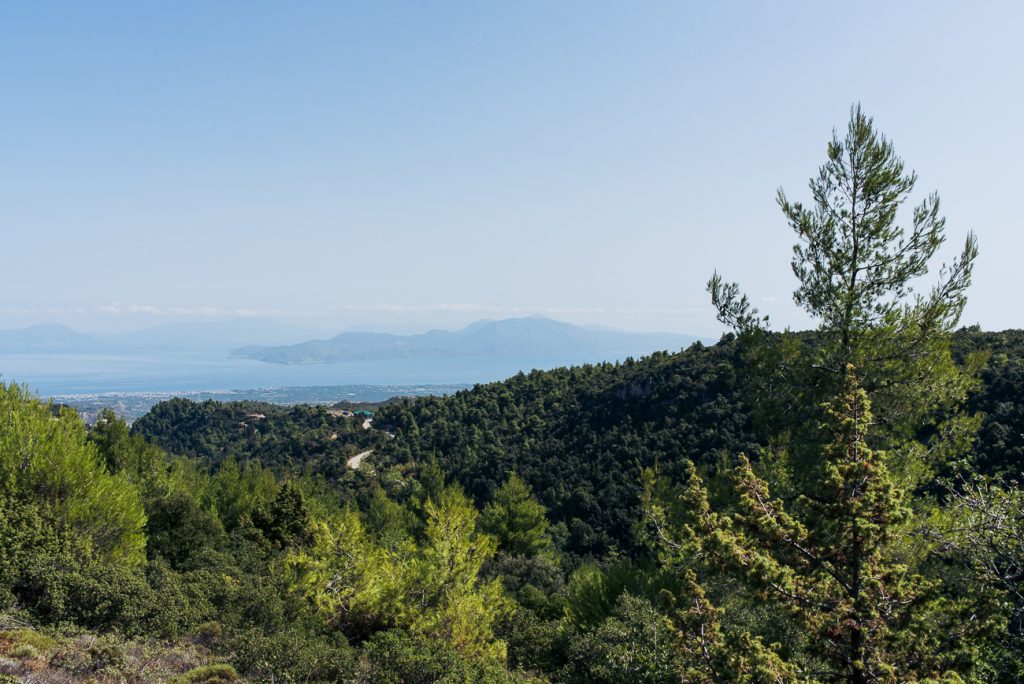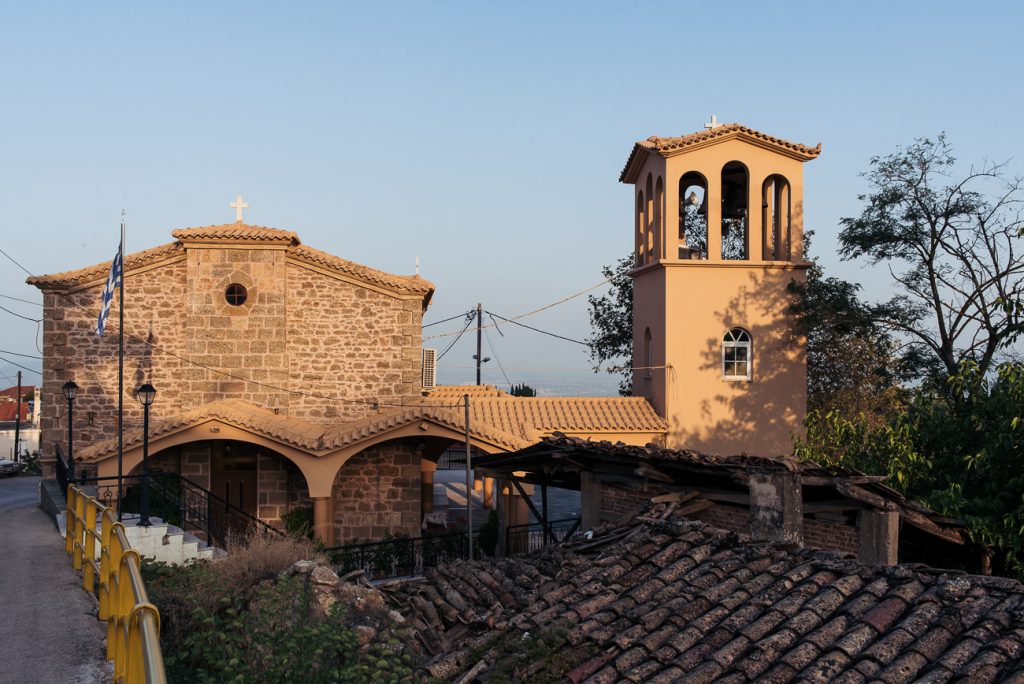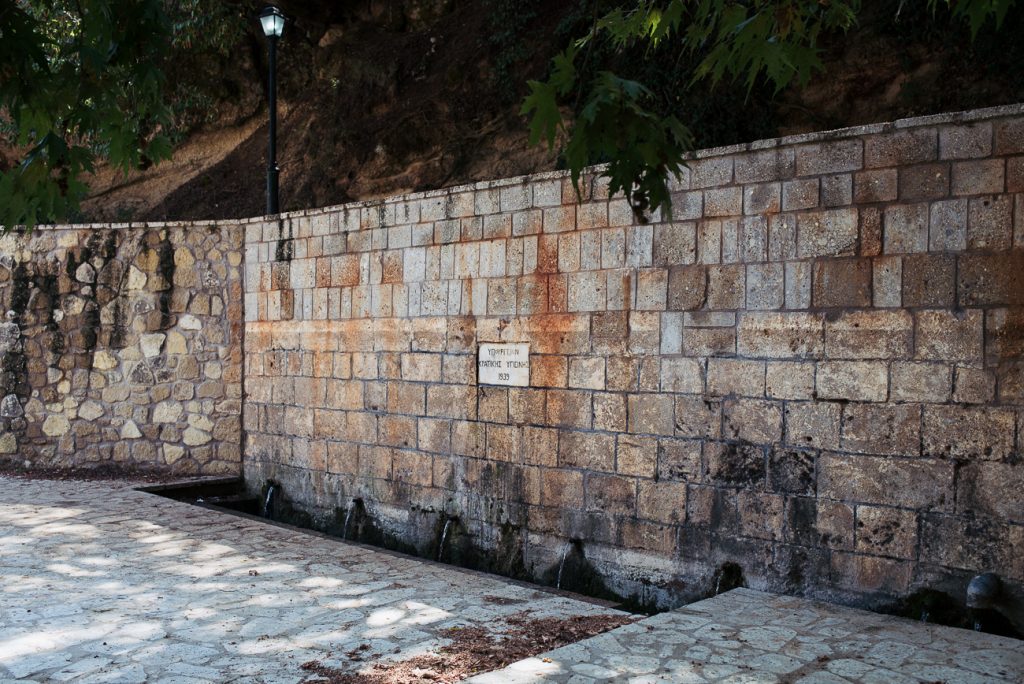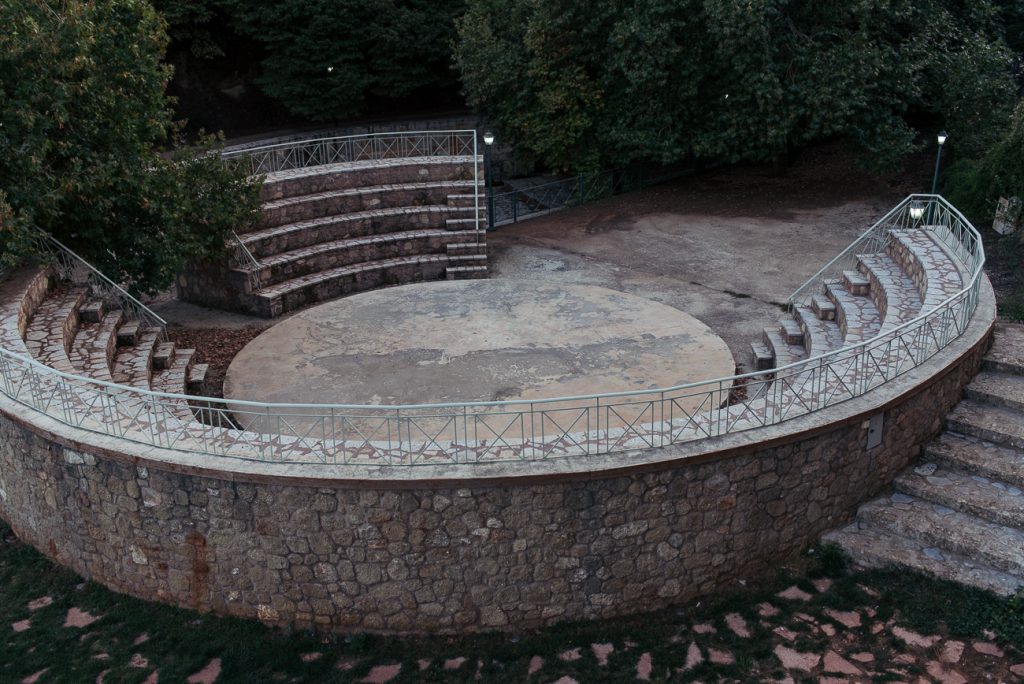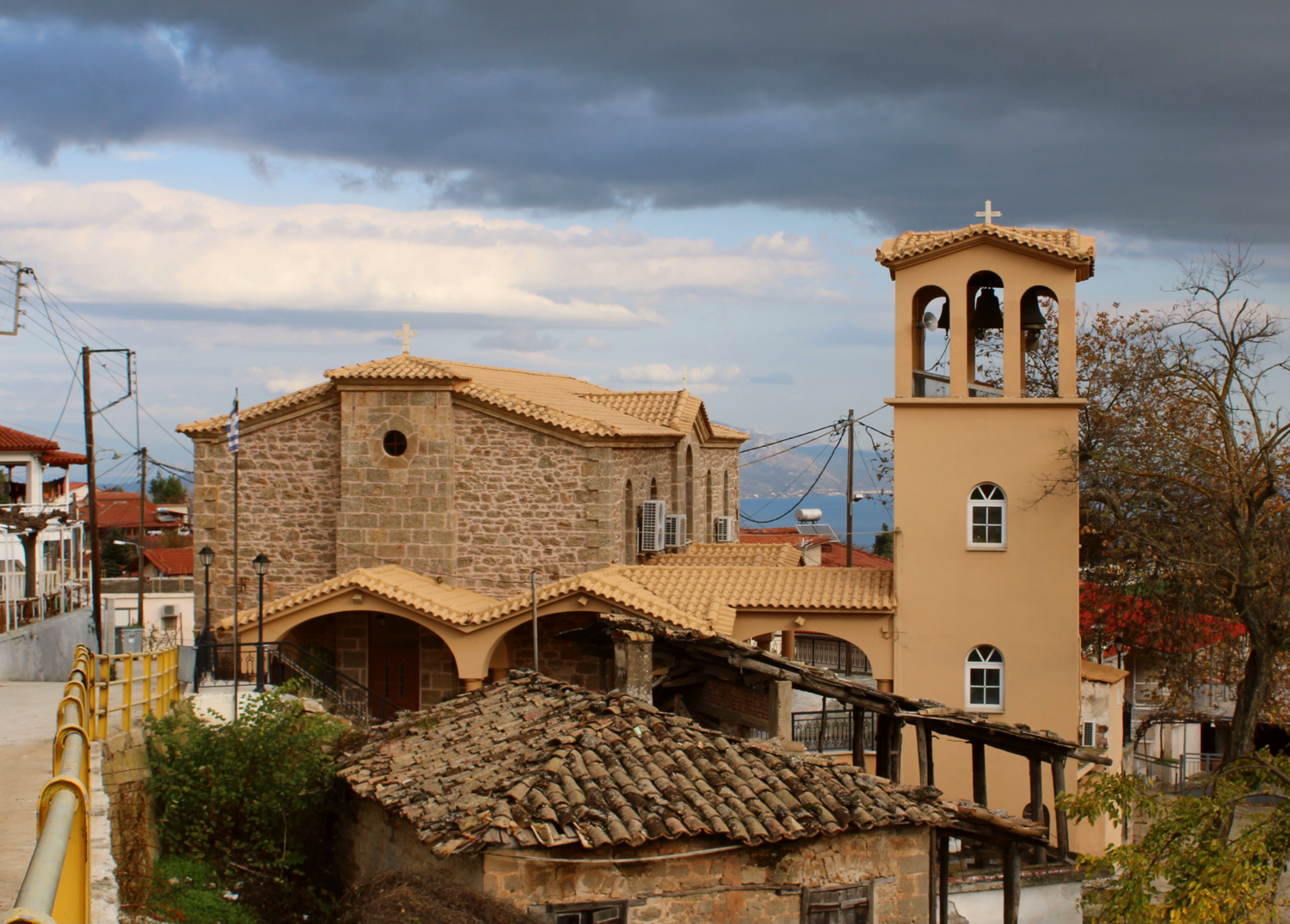
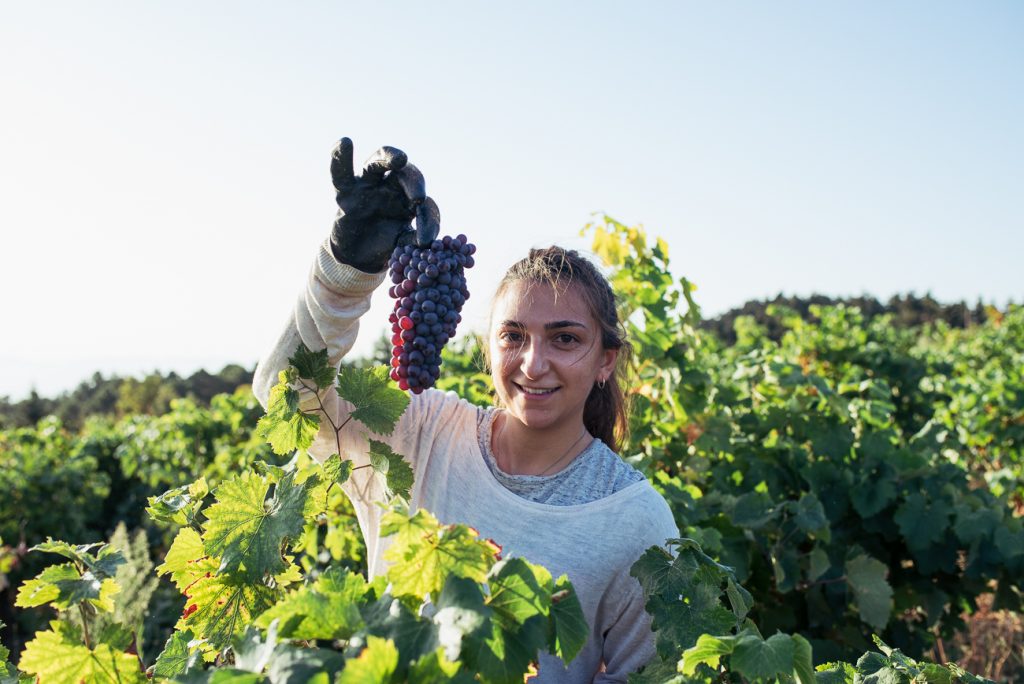
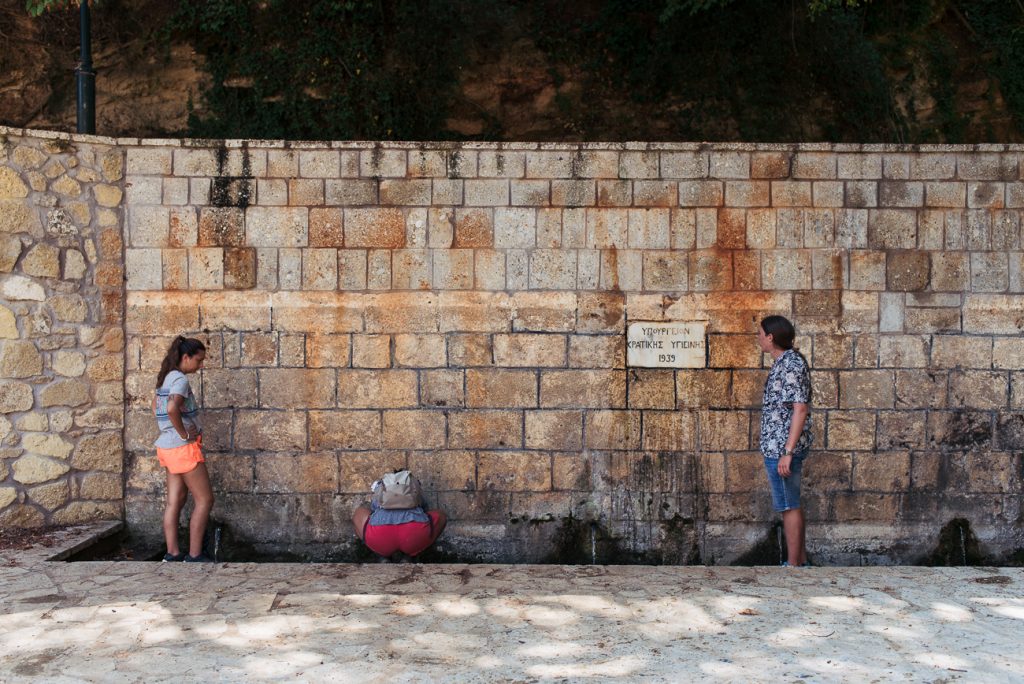
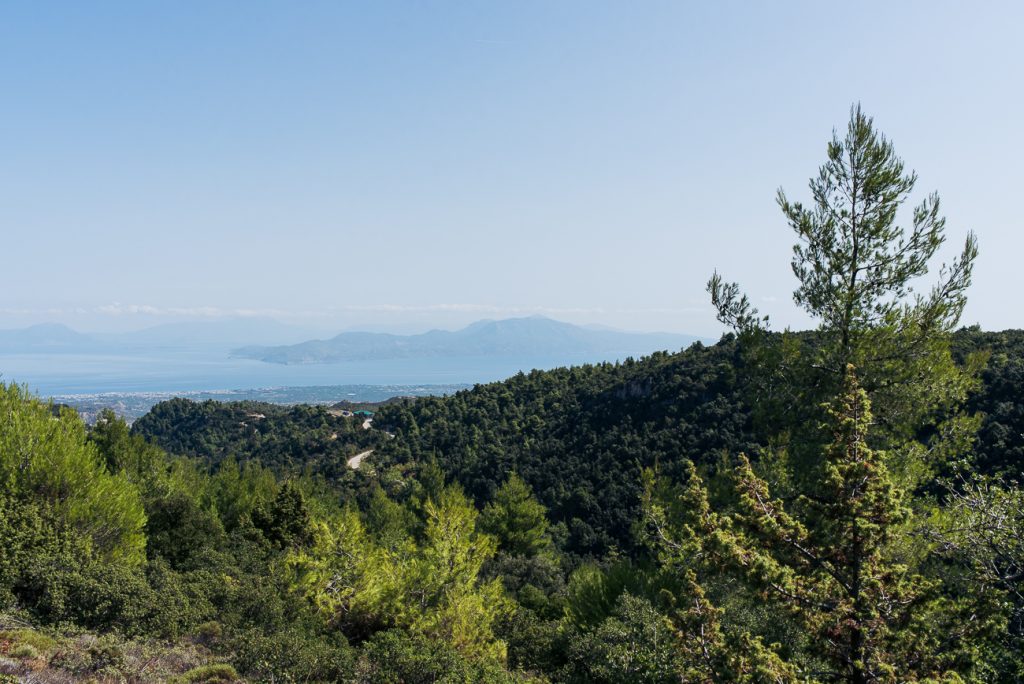
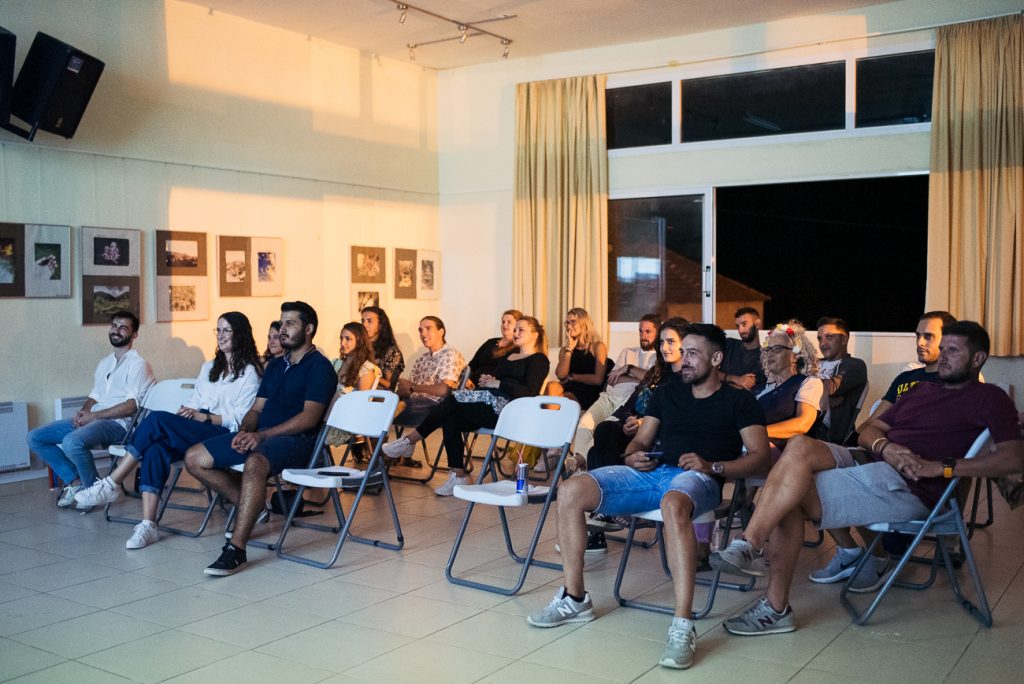
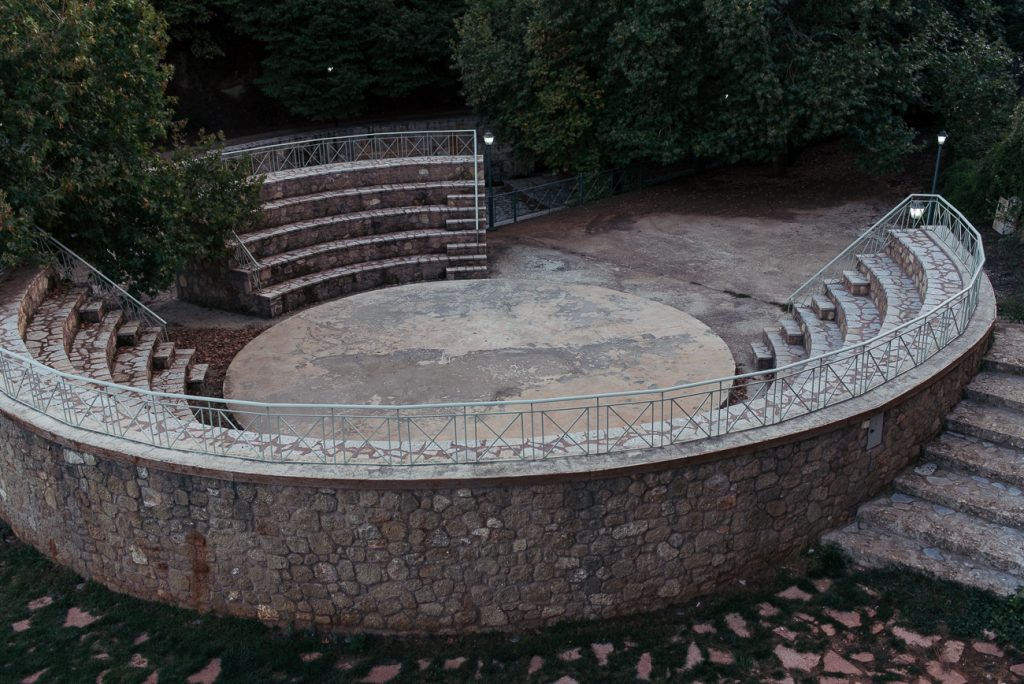
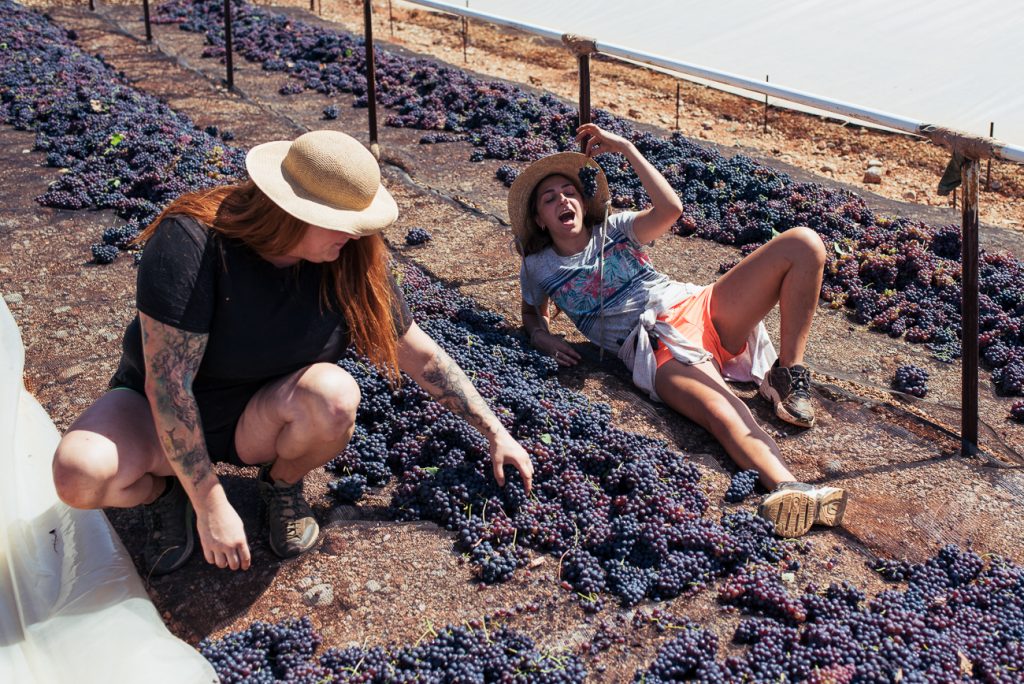
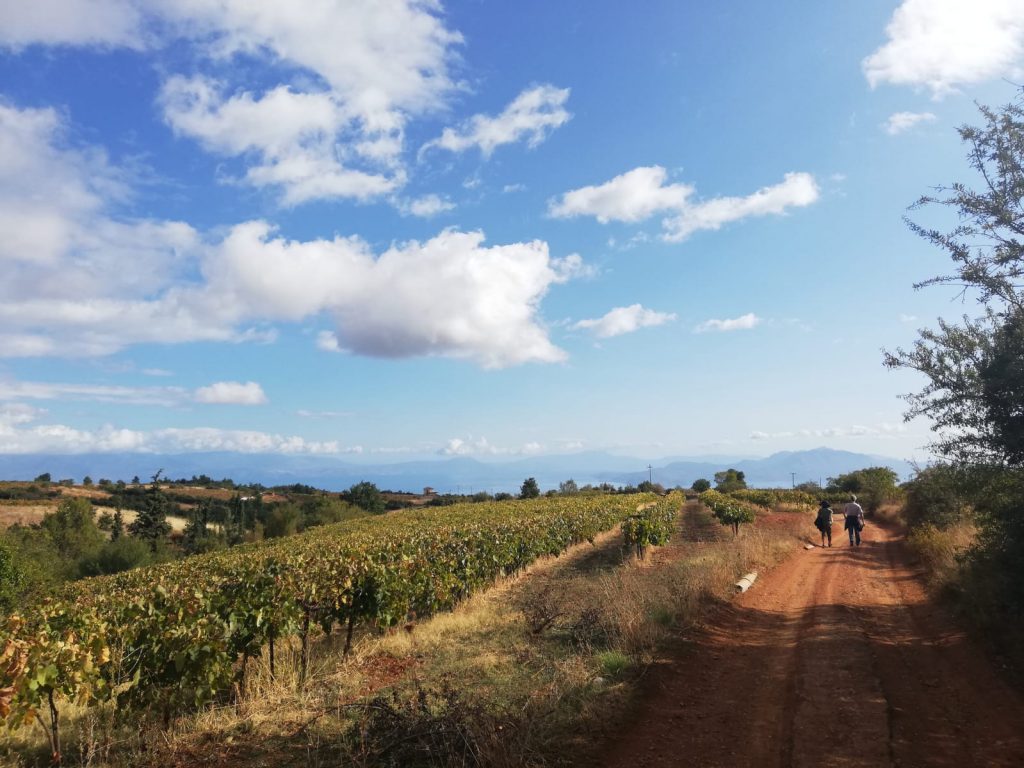
The Kryoneri (Matsani) village is located in the western part of the prefecture of Corinth and belongs to the municipality of Sikyon. It is built at 749 meters above sea level and covers an area of 25,000 acres around the Ellison river.
With 863 inhabitants (2011 census), Kryoneri is the largest village in the semi-mountainous region of the Korinthia district. The nearest town is Kiato, located 15 km away, whereas the city of Corinth is at a 42 km distance.
The local economy is purely agrarian, with olives and raisins (currants and sultanas) as main products. The village has a kindergarten, a primary school and a secondary school. A rural medical office can also be found in the village.
History
The Kryoneri village was founded during the Ottoman period and most of its residents came from neighbouring villages that were left abandoned, such as Rapspsomati, the Mosque and Lechova.
However, people have been dwelling on these grounds since the age of antiquity, as evidenced by the old village cemetery, an early Christian basilica from the 6th century AD, as well as several unearthed tombs from the Mycenaean period, 1250 BC. There are two churches in the village, the oldest one being the church of the “Virgin Mary”, which also has its own cemetery. However, the main chruch was always thought to be the church of “Our Lady in Rapsomati”.
The village name: from Matsani to Kryoneri
Kryoneri’s previous name was “Matsani”, a word denoting a village or pasture located between two rivers, which fits the geomorphology of the village. The name “Matsani” was probably given by the Franks who have conquered the western and northern Peloponnese between 1204 and 1430.
Around the year 1405, Theodore A Palaiologos was allowed to enter the Peloponnese with an army of 10,000 Albanian Christians. This was because, back then, the Peloponnese had suffered a great loss of population due to the black plague epidemic. Therefore, today, many people in the village have Arvanite names (of Albanian origin) and some Arvanite songs and traditions were preserved to this day.
The village name was changed in 1960 as decided by the Community Council. This decision obeyed a 1958 decree that provided for the mandatory change of all city names believed to be of Turkish origin. Although “Matsani” did not originate from Turkish, its name was changed to “Kryoneri” in order to sound more Greek.
A village of “resistance”
Historically, during the many revolutions and wars, the village helped defend the country from foreign aggression.
During the 1821 revolution for the liberation of Greece, written sources show that Matsani served as a supply centre for soldiers, while the headquarters were in Souli.
During the First and Second World Wars and the resistance against the invading Turks in Cyprus, Kryoneri sent many of their own soldiers onto the battlefields.
Tourist attractions
The Holy Trinity, a stone basilica built in the late 19th century, stands out through its beautiful marble temple built by Tiniac artisans. Today it is the village’s main church.
In the vicinity, tourists can visit the Lechova monastery, a Byzantine monument from the 11th century, located 5 kilometres away from the village. Surrounded by lush natural vegetation (mainly pine), in an idyllic scenery, the Monastery offers a breathtaking view over the Gulf of Corinth.
The Kryoneri Astronomic Observatory is only 1.5 km away and represents one of the most important scientific and research centers in the country.
The Amphitheatre, located near the upper fountain of the village, is another point of interest thanks to its amazing audibility. Therefore, many outdoor events take place there during the summer.
Also of special interest, are the cultural events organised by the Cultural Association of the village, which take place throughout the entire month of July. Other big and important cultural events, are the Carnival and local festivities happening every year on the 22nd and 23rd of August. Lastly, people all around the village celebrate the Virgin Mary on August 15th.
